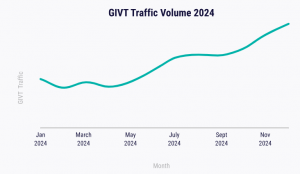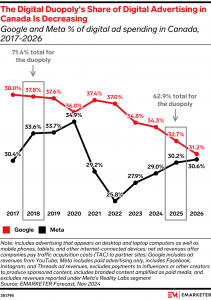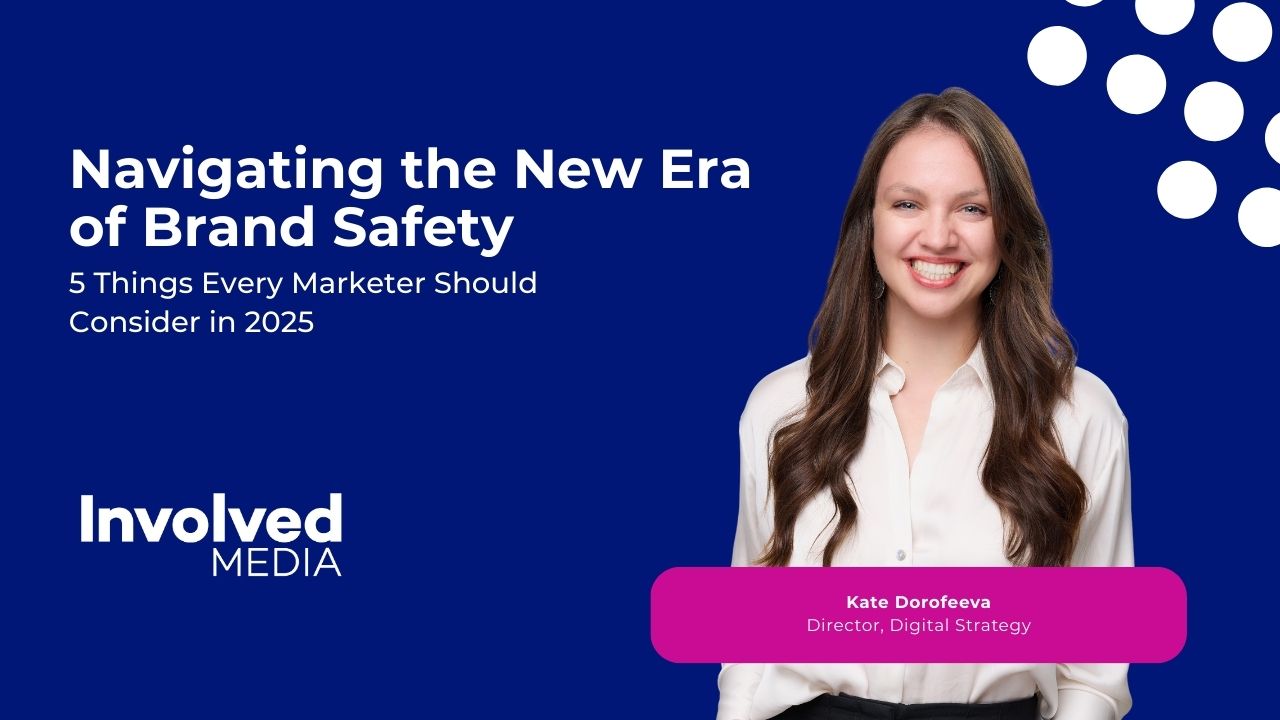There has been a lot of news lately affecting the media industry. One headline after another seems to reveal a new challenge for advertisers & media industry (I’ll save a post about challenges to our society for another day), making it clear that the landscape is shifting in ways we’ve never seen before.
From AI bots increasing ad fraud, to Meta’s decision to scale back fact-checking, safeguarding brand’s presence online must be top of mind for all advertisers.
Here are the top 5 things every marketer should consider about Brand Safety going into 2025.
1. Fraud is getting more sophisticated, and Generative AI is to blame
Fraud in digital advertising is not a new problem, but one that is evolving faster than ever. While the tools have improved dramatically over the years with innovation in both the platform-defined and 3rd party brand safety measures, they are always playing catch up to the rapid changes in the tech landscape, particularly with the rise of AI.
DV Fraud Lab found a 20% surge in new fraud schemes including an almost 60% increase in audio and video streaming fraud schemes and variants – in 2023 alone (1). The primary driver is Generative AI: it makes it easier and faster to falsify data patterns at scale. Another side of the problem is the rapid adoption of AI crawlers: in a study published on January 9th, 2025, DV revealed that AI crawlers and scrapers are contributing to an 86% increase in General Invalid Traffic (2):


Staying updated on the latest developments in fraud & invalid traffic detection tools is essential. As always, advertisers should lean on their agencies, as well as third party partners, to help them navigate these changes and ensure fraud / invalid traffic detection is a part of media investment discussions.
2. Social instability is the new normal
Oof. Where do we begin.
From Elon Musk buying Twitter in 2022, which entailed a complete revamp of platform’s policies, to Meta ending fact-checking, to a looming ban of TikTok in the coming weeks in the US – social media landscape is increasingly more challenging to navigate (professionally – but, let’s be honest, personally also). With the removal of fact-checking and moderating policies across most popular social networks, the new policies (or lack thereof) will not only fuel the rise of misinformation, but also strip what little protection many communities have online – starting with the US.
The implications are far reaching for advertisers. Placing ads next to misinformation, hate speech, or controversial content can result in negative reputation, PR nightmares – you name it. Current platform-defined brand safety options are not even close to being sufficient to safeguard brand’s advertising. And besides – companies like Meta are notorious for not allowing 3rd party brand safety tracking on their platforms, resulting in even less control and visibility.
If nothing else, there’s hope we will see changes in brand safety solutions as Meta may look to reduce potential revenue loss from advertisers. Current social landscape presents a strong opportunity for new market entrants as well – will we see more independent social media networks pop up in 2025? We’ve already seen platforms like BlueSky emerge in response to X, amassing 20 million users as of November 2024, albeit not offering advertising opportunities as of today. The landscape is shifting, and it’s shifting fast.
What does this mean for marketers? It’s important to understand the unique risks each platform presents over time and adapt your approach proactively. While Meta & TikTok changes are only starting with the US, Canadian advertisers should start preparing immediately for how they will adjust their social strategies once they inevitably reach Canada.
3. Conscious media strategy is the key to reducing media wastage
The days of blindly pouring money into high-reach platforms are over. A conscious media strategy – one that includes being selective about where you advertise and how much you spend – can significantly reduce wastage and improve campaign performance. Instead of focusing on reach at all costs, prioritize quality, relevance, and safety, ensuring your ad dollars go further.
We are already seeing this trend manifest in the decreasing reliance on the digital duopoly of Google and Meta over the last few years in Canada – and the trend is forecasted to continue:


Starting with the foundations of solid media strategy, and optimizing for outcomes, should never be forgotten – but the context must change: at what cost do I get a low CPM? Focusing on diversifying investment and ensuring brand safety is at the core of digital plans is a must for all marketers in 2025.
4. Brand safety and performance are inextricably linked
Brand safety and performance are often viewed as separate concerns, but they are deeply interconnected. Ads placed in trusted environments, where content is carefully curated or actively moderated, both protect a brand’s reputation and drive better results.
There are many angles to slice this; one is that many studies prove that trusted environments correlate with higher attention, which in turn correlates with improved performance metrics.
Not only will you reduce wastage by focusing on brand safety, which would already improve your cost efficiencies, focusing on trusted contexts will further enhance your performance across the marketing funnel.
5. Brand safety playbook is not “one and done”
Brand Safety has been a top concern for advertisers for as long as digital advertising has existed. However, recent shifts in the landscape of social platforms, coupled with growing challenges related to misinformation and regulatory uncertainty, have ushered in a new era of media strategy that demands more than just traditional safety measures. A brand safety strategy cannot be a “set it and forget it” exercise.
As technology and platforms evolve rapidly, so must the approaches to brand safety. Relying on outdated tactics or ignoring emerging trends could leave your brand vulnerable to unexpected threats. In 2025, an ongoing commitment to brand safety is not just a best practice – it’s a necessity.
Final Thoughts
As we move into 2025, it’s clear that the digital advertising landscape is more unpredictable than ever. As always, the goal should be to balance safety with performance – ensuring that every media dollar spent is driving value without compromising brand integrity. In 2025, the brands that adapt, stay informed, and prioritize safety will be the ones that thrive.


